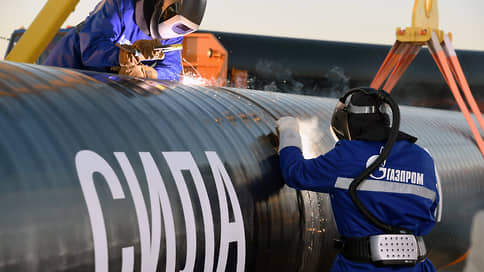The expansion of Power of Siberia for two thermal power plants in the Far East is estimated at 400 billion rubles.
[ad_1]

Regulators and market participants continue to discuss possible ways to implement the president’s instructions on gasification of thermal power plants in the Far East. According to preliminary estimates, the re-equipment of the coal-fired Blagoveshchenskaya CHPP and Neryungrinskaya GRES will cost 8 billion rubles, which could increase tariffs for electricity and heat. However, the expansion of the Power of Siberia pipeline, necessary for gasification of the facilities, will cost 400 billion rubles—according to analysts, this is approximately twice as expensive as building such power plants from scratch.
Converting the Neryungri State District Power Plant (570 MW, Yakutia) and the Blagoveshchenskaya Thermal Power Plant (404 MW, Amur Region) from coal to gas will require an investment of 400 billion rubles. in the expansion of the Power of Siberia gas pipeline. This was stated on February 27 by the director of the gas industry development department of the Ministry of Energy, Artem Verkhov, speaking at a meeting of the council on regional gasification issues under the Federation Council: “We have two problematic issues – Blagoveshchensk and Neryungri. Moreover, both of them are on instructions from the president and must be carried out. Therefore, here, at a minimum, an expansion of the Power of Siberia-1 will be required, the necessary loopings will need to be built,” he said (quoted by Interfax).
Neryungrinskaya State District Power Plant (operating since 1983) and Blagoveshchenskaya Thermal Power Plant (operating since 1976) belong to RusHydro. According to preliminary estimates, Neryungrinskaya GRES will consume 2 billion cubic meters of gas per year, Blagoveshchenskaya CHPP – 0.99 billion cubic meters. The cost of re-equipment of the thermal power plant in 2023 was estimated at 2.8 billion rubles. The costs of re-equipping the state district power station, according to the industry publication Peretok, could amount to 4.6 billion rubles.
Sources of funding for the modernization of the two coal plants are still unclear. “In addition to assessing the consequences of switching from coal to gas, it is necessary to assess the tariff consequences for electricity and heat. Will this be acceptable for consumers of the Blagoveshchenskaya CHPP? This is also important to calculate,” noted Artem Verkhov.
Vasily OrlovGovernor of the Amur Region, February 27:
“It is resonantly perceived by the population that the neighboring city (Heihe – Kommersant) has already been practically gasified with Russian gas, while in Blagoveshchensk they are still heated with coal.”
Representatives of the Far Eastern regions, in turn, complained about problems with the supply of coal. Thus, the governor of the Amur region Vasily Orlov said that the region lacks local coal, which is why it is necessary to transport fuel from the Krasnoyarsk Territory over a distance of 3.5 thousand km. According to his estimates, coal consumption increases by 100–200 thousand tons annually. He also noted that the regional authorities are receiving requests from the Chinese government to reduce the volume of harmful emissions towards the city of Heihe. According to Mr. Orlov, now the Blagoveshchensk CHPP emits more than 46 thousand tons of harmful substances, and after gasification the figure will drop to 7.6 thousand tons: “The population is resonantly perceived that the neighboring city (Heihe.— “Kommersant”) has already been practically gasified with Russian gas, and in Blagoveshchensk they still heat it with coal.”
Energy expert Kirill Rodionov recalls that China is one of the most active builders of coal generation in the world. Thus, by the beginning of 2024, China accounted for 53% of the global capacity of existing coal thermal power plants (1,137 GW out of 2,130 GW) and another 71% of the capacity of those under construction (140 GW out of 197 GW). In 2023, 47.4 GW of coal-fired thermal power plants were commissioned in China, while only 3.7 GW were closed. At the same time, the total capacity of coal-fired thermal power plants, the construction of which began only in 2023, amounted to 68.3 GW, notes Kirill Rodionov.
Gasification of the regions of the Far East is important, but this program should be considered as a comprehensive investment in the development of production infrastructure, improving the quality of life and attractiveness of the regions, says Sergei Rozhenko from Kept: “An investment of 400 billion rubles. only for the conversion of two relatively small stations to gas with a total capacity of less than 1 GW does not seem economically feasible, since it is equivalent to approximately double the investment in the construction of such facilities from scratch.”
[ad_2]
Source link





